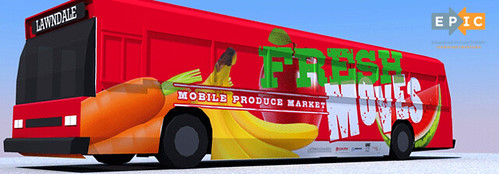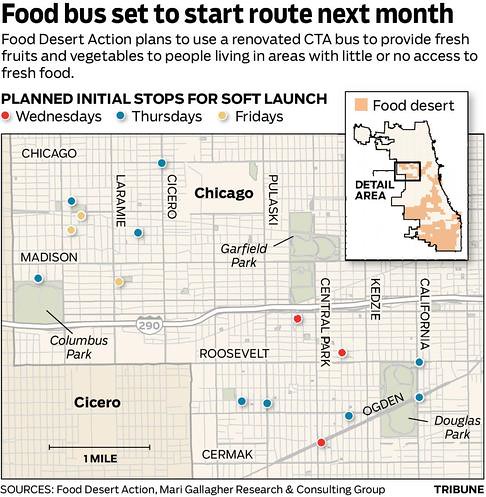While I have been somewhat dismissive of claims of food deserts in DC, because most places are amply served by supermarkets within a one or two mile radius, even if the supermarkets are located just outside of DC, across the DC-Maryland border, the fact is that in many center cities such as Detroit, Baltimore, Philadelphia, St. Louis, etc., some areas truly are without convenient access to fresh foods.
From the standpoint of cost and practicality, this may make more sense than trying to create farmers markets and similar initiatives, because often the cost of farmer-produced food is higher than grocery store prices, because most farmers, like any other retailers, prefer to sell their foodstuffs at higher prices (think Bethesda, Silver Spring, Dupont Circle neighborhoods) rather than at lower prices, as well as the coordination burden of trying to find willing farmers, etc.
Plus the costs of "market development" in underserved areas are significantly higher. (E.g., the Anacostia Market sponsored by Community Harvest ended up spending upwards of $100/customer in marketing costs.)
( Zbigniew Bzdak, Chicago Tribune / March 22, 2011 )Steve Casey, board president of Fresh Moves with a city bus which is going to be converted into food store delivering fresh produce to residents of Chicago.Speaking of design and great marketing, this blog entry, "
Fresh Moves Mobile Market," discusses
EPIC, a design initiative for nonprofits in the Chicago area, where creative professionals provide their design expertise in developing projects. The design for the Fresh Moves bus came from an EPIC project. I think they can teach transit marketers a thing or too. Frankly "Fresh Moves" would be a great tagline for transit.

-----
Note that another initiative is to work with corner stores to get them to start carrying more fresh produce. This requires creating systems to provide them with the product at cost-competitive prices as well as marketing and nutrition education for consumers, because a big part of the issue is not access to food (most people, even in poorer communities have access to grocery stores and can get to a store) but on what people believe to be true about nutrition and food preparation being opposite of healthier food consumption practices.
Labels: change-innovation-transformation, design method, food-agriculture-markets






0 Comments:
Post a Comment
<< Home